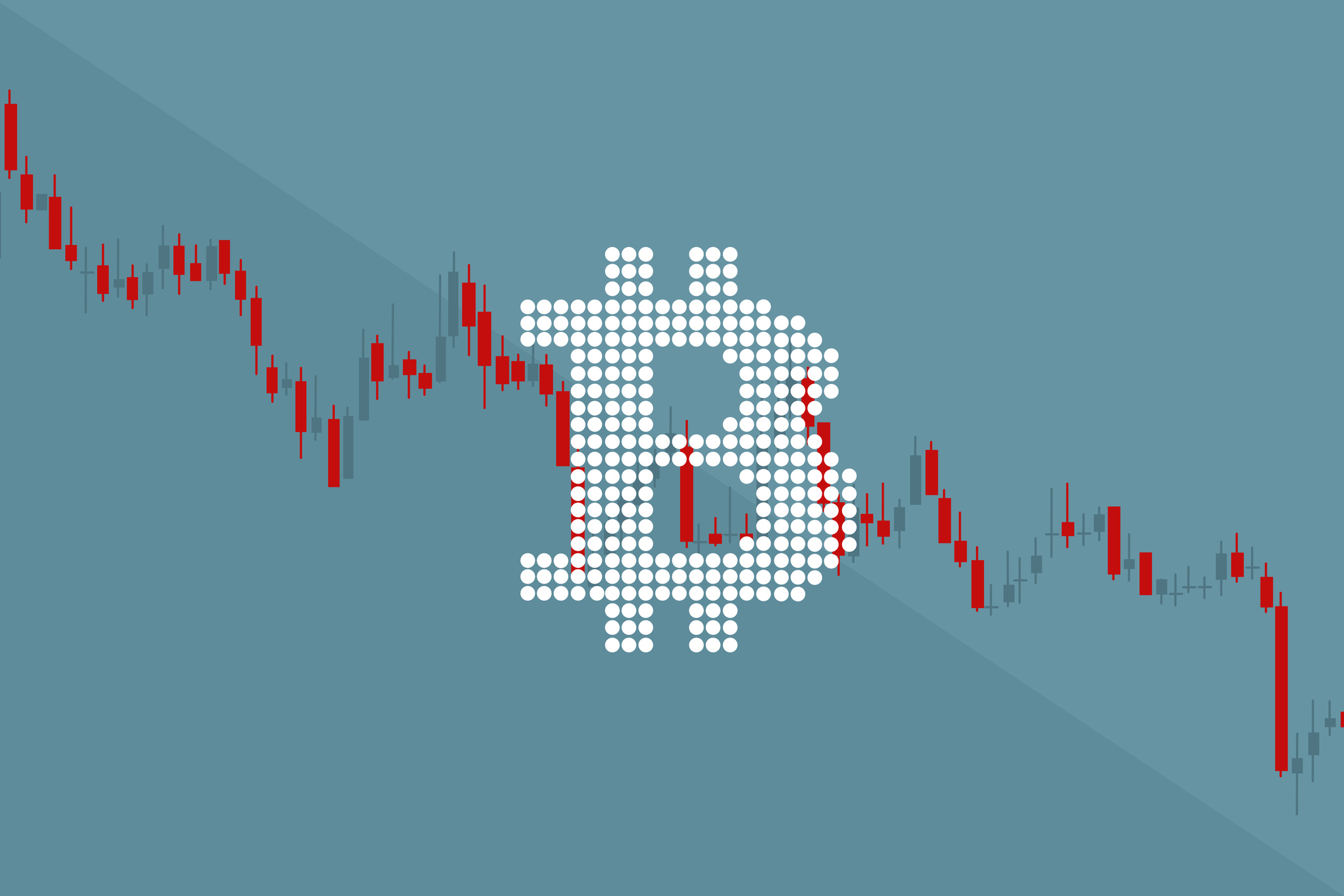What’s behind BTC’s dip?

Despite the success of spot bitcoin ETFs, BTC has seen prices slip from 2024 highs. [Namthip Muanthongthae via Getty Images]
There’s never a dull moment on the blockchain. Here’s what you need to know this week:
Why did BTC dip under $39K? A closer look at why crypto markets have seesawed in the wake of spot bitcoin ETF approvals.
Crypto quotes from Davos. What business leaders said about cryptocurrency at this year’s World Economic Forum.
This week in numbers. The amount of crypto owners around the world, the six-figure sum a digital cat image fetched at auction, and more stats to know.
MARKET UPDATE
Spot bitcoin ETFs are a hit, so why are crypto prices down this week?
For much of 2023, bitcoin prices were on the rise — powered by optimism around the arrival of spot BTC exchange-traded funds (ETFs) that would bring crypto to everyone from individual 401(k) holders to vast pension funds. On January 11, a collection of such products began trading — and as a group they’ve been a monster hit, with more than $4 billion flowing into nine of the funds in the first six days.
But while BTC surged to three-year highs around $49,000 in the immediate wake of the ETF approvals, the gains didn’t stick around for long. This week, BTC prices are down more than 20% from the post-ETF peak — and many other tokens have also taken significant tumbles.
What’s driving the dip? Here’s what experts are saying.
Several of the ETFs have seen mega inflows – but not all of them.
BlackRock and Fidelity, the two biggest Wall Street titans to enter the spot BTC ETF market, each saw more than $1 billion in inflows in the first six days, while crypto-forward fund managers Bitwise and ARK Invest both saw around $400 million.
Yet some of the capital flowing in was balanced by capital flowing out. Grayscale’s new ETF saw more than $2.8 billion in outflows in the same period — although it’s important to understand that this is a unique case.
The firm’s successful battle with the SEC to convert its Bitcoin Trust (GBTC) product into an ETF was a key turning point for the entire crypto industry. And because GBTC was a huge fund, the new ETF still had more than $20 billion under management after some holders pivoted out of GBTC or into alternative funds.
As the Wall Street Journal notes, “Investors taking profits on GBTC’s price gain and moving to lower-fee competitors have helped drag crypto markets lower.”
Coindesk reports that around $1 billion of GBTC’s outflow came from FTX liquidating its holdings as part of its bankruptcy process.
Trade volume for older crypto ETFs is way down.
Before the new ETFs launched, there were already BTC futures ETFs, which launched with huge fanfare in 2021 and served as a solid proxy for the spot market.
But now that investors can get direct exposure to BTC’s price, some older funds are seeing less action. Last Thursday, around $500 million of shares in ProShares’ futures-based BTC ETF traded, compared to more than $2 billion the day the spot ETFs launched.
Some saw the launch of the ETFs as a “sell the news” moment.
One of investing’s many adages is “buy the rumor, sell the news.” Many market watchers saw the buzz around the ETF launch as a classic example of this strategy.
“Continued selling from Grayscale Bitcoin Trust extinguishes the ETF-approval euphoria and leaves investors with an end-of-party price hangover,” the co-founder of crypto lender Nexo told Barron’s. “Bitcoin’s short-term destiny rests on the extent and duration of GBTC selling … and whether or not inflows into the other 10 spot-Bitcoin ETFs act as a counterweight.”
The bottom line…
While BTC prices are down from the recent peak, they remain up more than 70% in the last 12 months, and many analysts are optimistic about where they could head in coming months.
For one thing, BTC’s next halving is set for April. Historically, halvings have been correlated with significant gains for the biggest cryptocurrency by market cap.
For another, the new ETFs are buying BTC at a remarkable clip — with more than 100,000 tokens purchased in the first week alone.
MONEY TALKS
What power players at Davos said about crypto
As they do each winter, a who’s who of the global economy — heads of state! Sam Altman! Sting! — descended on the ski village of Davos, Switzerland, last week for the annual World Economic Forum. With the BTC ETF news fresh on everyone’s minds, crypto was a hot topic. Here’s what they had to say.
Anthony Scaramucci: 2024 is crypto’s “Lazarus” year.
The founder of SkyBridge Capital is one of crypto’s biggest advocates on Wall Street. He called last year a “funeral dirge��” for crypto, after the collapse of FTX contributed to a market downturn. This year? Rising institutional adoption will make 2024 crypto’s “Lazarus” year, referring to the biblical story of a man rising from the dead.
Circle Chief Strategy Officer Dante Disparte: AI took some of the spotlight, but that’s a good thing.
Rising industries often flex their marketing muscle by taking over buildings on the town’s main strip, known as the Davos Promenade. This year, AI-related firms had a major footprint. While that meant crypto featured less prominently than in years past, that can be seen as progress, according to Dante Disparte, chief strategy officer at stablecoin issuer Circle.
“There’s an AI house every block, whereas historically there was a blockchain foundation or a web3 house or a crypto house,” Disparte said. “I take that to mean the technology stack has arrived, when the technology can sort of recede to the background.”
Coinbase Chief Policy Officer Faryar Shirzad: The global verdict on crypto is in.
Shirzad told Yahoo! Finance that he’s increasingly encouraged that “virtually every G20 economy” is moving toward establishing crypto regulatory frameworks. However, the lack of similar developments in the U.S. has made the country “less relevant” in the global crypto conversation, he said.
“There’s two forms of dialogue occurring: One is the American version and one is the global version,” Shirzad told Politico.
NUMBERS TO KNOW
580 million
Estimated number of global crypto owners at the end of last year, according to a new report. Overall, BTC holders make up 51% of all crypto owners, and the number of crypto owners was up 34% from the start of 2023.
$254,000
Sales price for “Genesis Cat,” a Bitcoin Ordinals NFT, at a Sotheby’s auction on Monday. The centerpiece of the 3,333-piece Quantum Cats collection fetched more than 12 times its estimated value of $20,000. (Bitcoin Ordinals, which took off early last year, involve putting any kind of digital file — games, videos, images — on Bitcoin’s blockchain.)
12%
Amount that Dogecoin gained on Saturday after the @XPayments account launched on the social media network formerly known as Twitter. As Decrypt put it, DOGE’s spike appeared to be based entirely on X owner Elon Musk’s enthusiasm for the token — and despite the account’s “lack of posts and no confirmation … about the planned payment functions.”
TOKEN TRIVIA
When did Ethereum originally launch?
A
2008
B
2010
C
2015
D
2017
Find the answer below.
Trivia Answer
C
2015
Coinbase Bytes
Your weekly digest of crypto news
Learn how we collect your information by visiting our Privacy Policy











